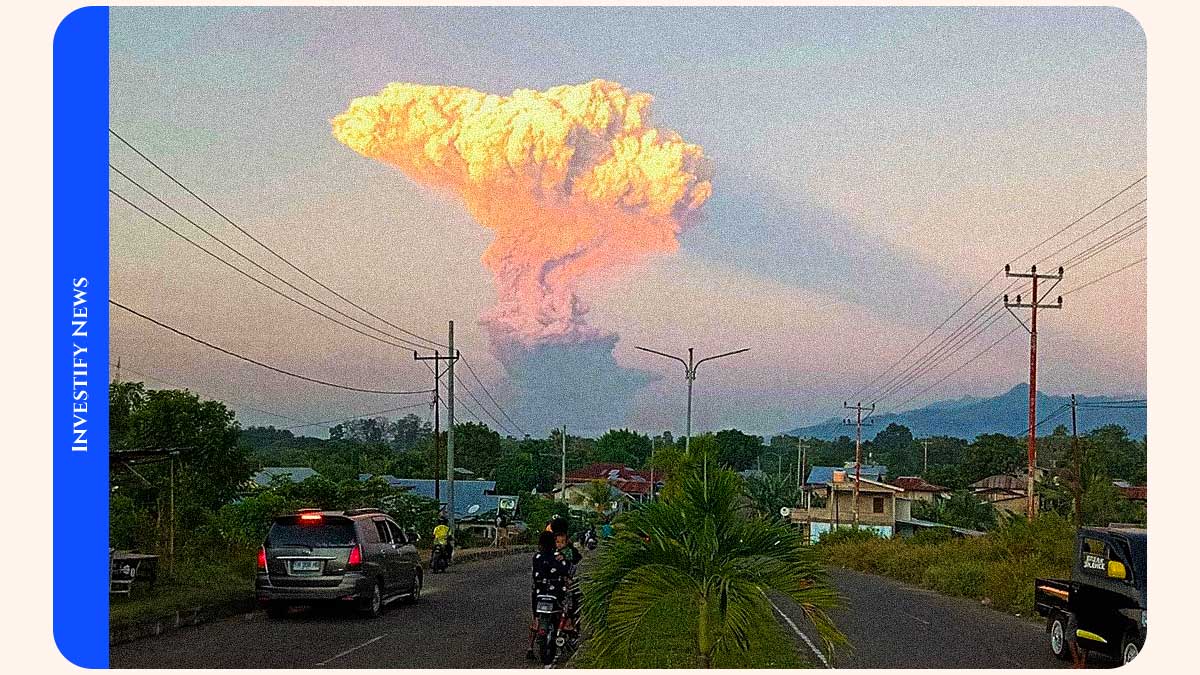Date: June 18, 2025
Location: East Nusa Tenggara, Indonesia

Mount Lewotobi Laki-Laki on Lembata Island in Indonesia erupted on Tuesday evening. It sent large clouds of volcanic ash into the air. This eruption caused many people to evacuate, led to disruptions in air travel, and sparked emergency response efforts in the area.
What Happened?
On June 17, 2025, the volcano erupted explosively, sending ash plumes as high as 10 kilometers (32,800 feet) into the sky. The eruption was one of the most powerful in recent years for the region, prompting the Indonesian Geological Agency to raise the alert level to its highest, indicating the immediate possibility of further large eruptions or pyroclastic flows.
A visible mushroom-shaped ash cloud was observed from up to 150 kilometers (93 miles) away, darkening skies and blanketing nearby areas in thick volcanic dust.
Evacuations and Safety Measures
Over 3,000 residents from several surrounding villages, including Boru, Hewa, Watobuku, Nurabelen, and Nileknoheng, were evacuated. Discover the captivating villages perched just 8 to 12 kilometers from the breathtaking summit of the volcano. Their proximity offers an unparalleled opportunity to experience the beauty and power of nature up close.
Authorities established a restricted zone of 8 kilometers around the crater and evacuated even the nearby volcano monitoring stations, citing danger from falling gravel and hot ash.
Fortunately, as of this writing, no injuries or deaths have been reported.
✈ Flight Disruptions Across Southeast Asia
The eruption severely disrupted air travel, particularly in and out of Maumere’s Fransiskus Xaverius Seda Airport, which remains closed due to low visibility and ash hazards.
Major flight impacts include:
- Singapore Airlines, Jetstar, Scoot, and Air New Zealand canceled or diverted flights to/from Denpasar (Bali).
- Air India Flight AI2145, which departed from New Delhi, was forced to return mid-flight.
- Affected routes include those connecting India, Singapore, Malaysia, China, and Australia.
Most airlines have offered full refunds, alternative routes, or hotel accommodations for stranded passengers.
🌋 Indonesia’s Volcanic Risk
Indonesia sits on the Pacific Ring of Fire, home to about 120 active volcanoes and regular seismic activity. The country is no stranger to volcanic threats, but each event carries immense local and international implications—from endangering lives to disrupting tourism and international flights.
This latest eruption follows a smaller one in November 2024, when Mount Lewotobi’s activity caused nine fatalities and displaced over 16,000 people. Experts are closely monitoring the ongoing activity of the volcano due to the continued unrest.
Emergency Response and Next Steps
- The National Disaster Mitigation Agency (BNPB) has mobilized rescue teams, medical supplies, and food for evacuees.
- Seismologists are assessing the likelihood of additional eruptions or lava flows.
- International air traffic authorities are in contact with Indonesia’s Volcanic Ash Advisory Centers (VAACs) to reroute planes and manage aviation hazards.
Looking Ahead
The next few days are critical. –
- Evacuees need long-term shelter, food, and health care.
- Flights are anticipated to resume after volcanic ash clears, possibly by June 20.
- Alert levels will remain high until seismic activity subsides.
Final Thoughts
The Mount Lewotobi eruption serves as a stark reminder of nature’s unpredictable power. Although early warnings and timely evacuations have helped prevent casualties, the impact of the eruption—especially on tourism, air travel, and local livelihoods—will be experienced in the coming weeks. Residents and travelers are urged to remain vigilant, follow official guidance, and check with airlines before making any travel plans.
Thank you for your sharing. I am worried that I lack creative ideas. It is your article that makes me full of hope. Thank you. But, I have a question, can you help me?
Your point of view caught my eye and was very interesting. Thanks. I have a question for you.